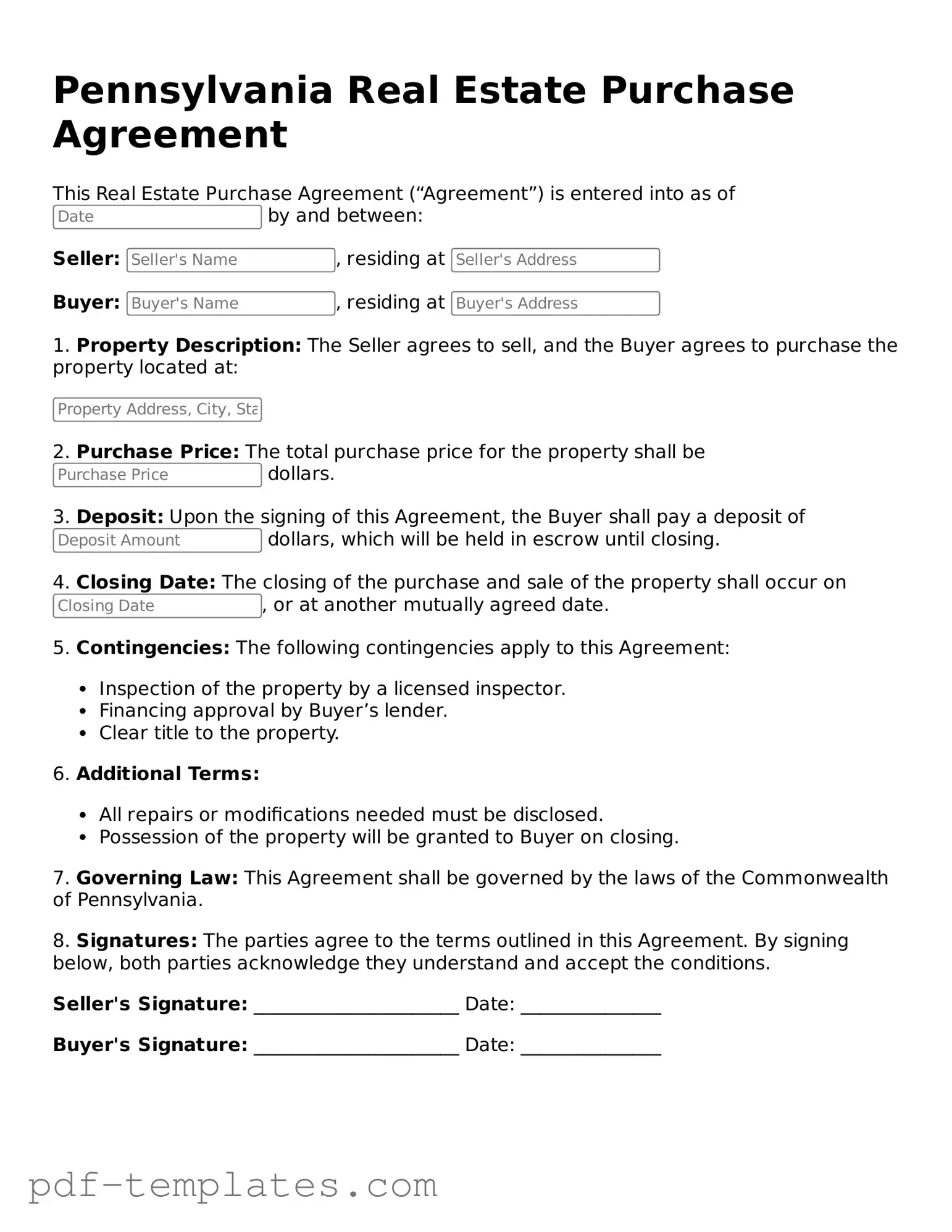The Pennsylvania Real Estate Purchase Agreement is similar to the Residential Purchase Agreement used in many states. Both documents outline the terms of a home sale, including the purchase price, contingencies, and the closing date. They serve as a binding contract between the buyer and seller, ensuring that both parties understand their rights and obligations. The Residential Purchase Agreement typically includes sections for earnest money deposits and disclosures, much like its Pennsylvania counterpart, making it a crucial document in the home-buying process.
The California General Power of Attorney form is essential for individuals who need to delegate financial decision-making powers to an agent, particularly when they cannot manage their affairs personally. Understanding the implications of this document is crucial, especially when considering different legal agreements related to property, like the formcalifornia.com/ which provides clear guidelines on power of attorney usage in California.
Another document that shares similarities is the Commercial Real Estate Purchase Agreement. While the Pennsylvania Real Estate Purchase Agreement focuses primarily on residential properties, the Commercial version addresses the complexities of business transactions. Both agreements detail the purchase price and terms, but the Commercial Agreement often includes additional clauses related to zoning laws and business operations. This makes it essential for buyers and sellers in the commercial sector to understand the specific terms applicable to their transaction.
The Lease Purchase Agreement also bears resemblance to the Pennsylvania Real Estate Purchase Agreement. This document allows a buyer to lease a property with the option to purchase it later. Like the purchase agreement, it outlines the purchase price and terms but adds a layer of flexibility for buyers who may not be ready to commit immediately. Both agreements protect the interests of the parties involved, ensuring clarity in financial obligations and timelines.
The Option to Purchase Agreement is another similar document. This agreement gives a potential buyer the right, but not the obligation, to purchase a property within a specified timeframe. It shares key elements with the Pennsylvania Real Estate Purchase Agreement, such as purchase price and duration. However, the Option to Purchase Agreement is more about securing a potential future purchase, allowing buyers to evaluate the property before making a full commitment.
Finally, the Seller's Disclosure Statement can be viewed as complementary to the Pennsylvania Real Estate Purchase Agreement. While the purchase agreement outlines the terms of the sale, the Seller's Disclosure Statement provides critical information about the property's condition. It includes details about any known defects or issues, ensuring that buyers are fully informed before making a purchase. This transparency helps to build trust between the buyer and seller, fostering a smoother transaction process.
